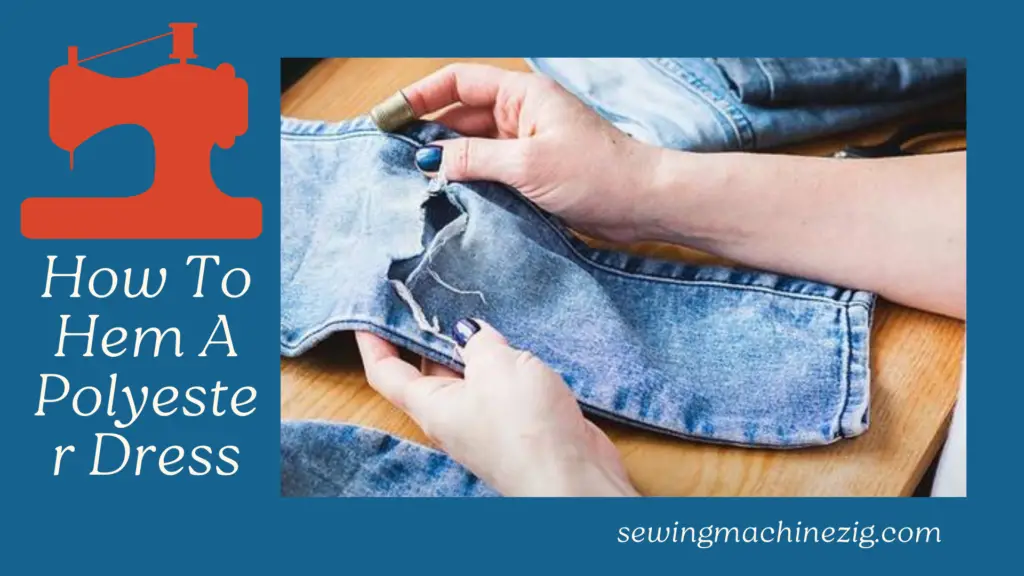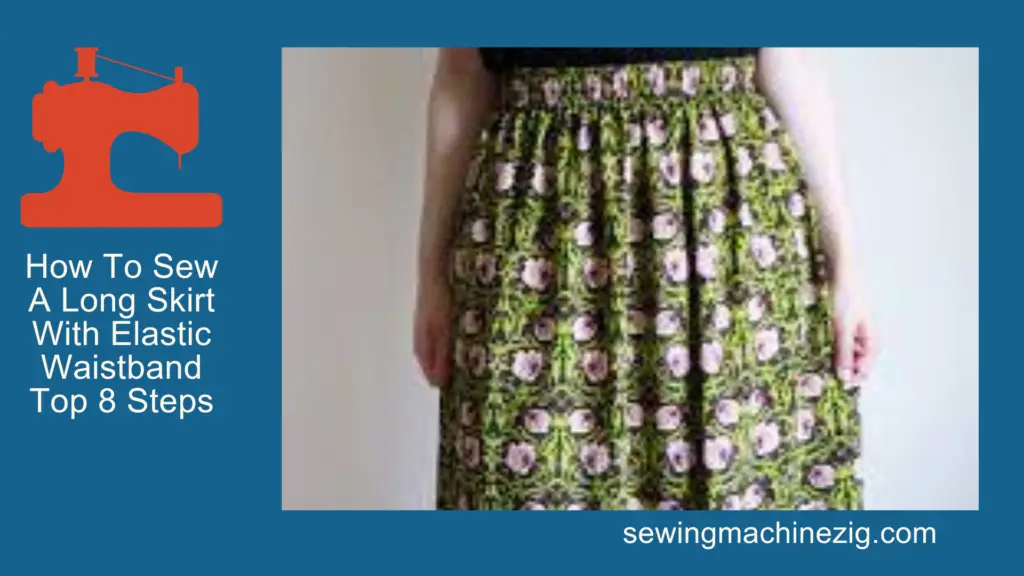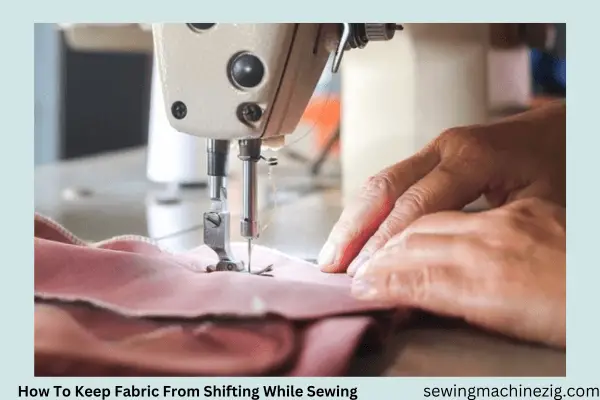
Sewing is a wonderful and rewarding hobby that allows you to create beautiful and unique items. However, one of the most frustrating challenges in sewing is keeping the fabric in place while you work. When the fabric shifts or moves, it can result in uneven seams, crooked hems, and even ruined projects. e
In this article, we will discuss some of the most useful tips and tricks for how to keep fabric from shifting while sewing. Whether you’re a beginner or an experienced seamstress, these tips will help you achieve more precise and accurate results.
Step-By-Step Guide:
1: Use Pins Or Clips:
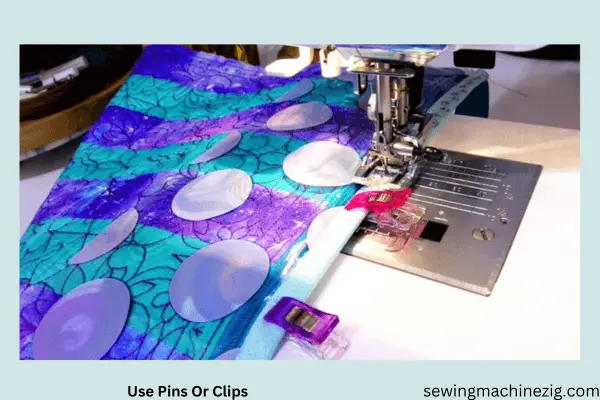
One of the easiest and most effective solutions is to use pins or clips to hold your fabric in place. Make sure to place them perpendicular to the seam line, about an inch or so apart. This will help prevent your fabric from shifting as you sew.
2: Use A Fabric Stabilizer:
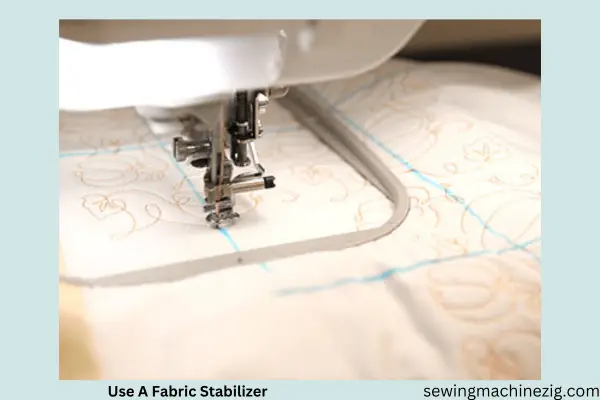
Another option is to use a fabric stabilizer. This is particularly helpful when working with slippery or stretchy fabrics. The stabilizer will help keep your fabric in place and prevent it from shifting while you sew.
3: Double-Check Fabric Placement:
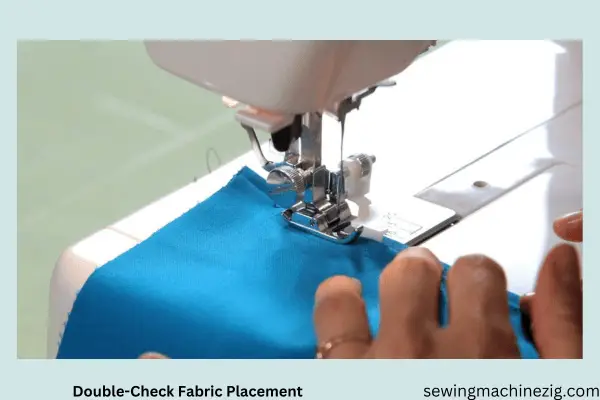
Before you start sewing, make sure your fabric is properly placed and lying flat. This will help prevent shifting as you sew.
4: Sew Slowly:
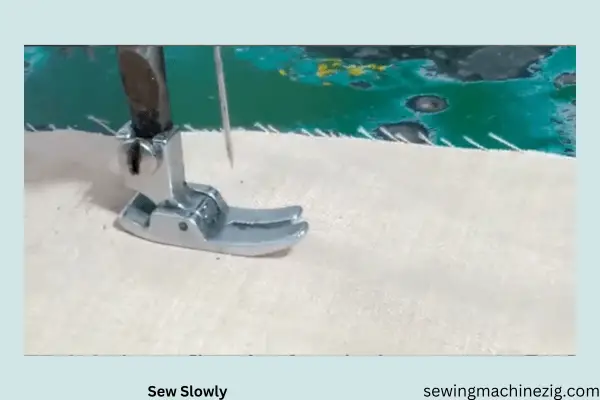
Take your time when sewing, especially if you are working with a difficult fabric. Sewing slowly and carefully will help prevent your fabric from shifting.
By following these solutions about how to keep fabric from shifting while sewing, you can ensure that your fabric stays in place while sewing, resulting in more professional-looking and accurate results.
How To Sew Slippery Stretchy Fabric
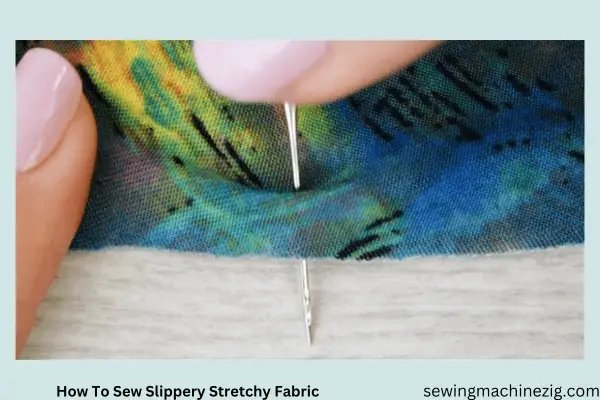
Sewing with slippery and stretchy fabrics, such as silk or jersey, can be a challenging task for even the most experienced seamstresses. These fabrics are notorious for shifting, stretching, and puckering, which can result in uneven seams and distorted garments.
However, with the right tools and techniques, sewing with these fabrics can be made much easier.
In this article, we will discuss some useful tips and tricks for how to keep fabric from shifting while sewing stretchy fabrics, allowing you to create beautiful and professional-looking garments without frustration.
Materials:
- Fabric
- Pins Or Clips
- Fabric Stabilizer (Optional)
Step-By-Step Guide:
Step 1: Prepare Your Fabric
Before you begin sewing, make sure your fabric is properly prepared. This may include washing, ironing, and cutting your fabric to the correct size and shape.
Step 2: Choose Your Pins Or Clips
Decide whether you want to use pins or clips to hold your fabric in place. Pins are traditional and easy to use, while clips are great for thicker fabrics or fabrics that are difficult to pin.
Step 3: Pin Or Clip Your Fabric
Starting at one end of your fabric, place your pins or clips perpendicular to the seam line, about an inch or so apart. Make sure to leave about 1/4 inch from the edge of the fabric on both the left and right sides.
For example, if you’re sewing a 1-inch seam, you’ll want to leave about 1/4 inch of fabric on either side of the seam line, so your pins or clips should be placed about 1/2 inch from the edge.
Step 4: Double-check your fabric placement
Once you’ve pinned or clipped your fabric, double-check that it is lying flat and straight. Adjust as needed to ensure that your fabric is properly aligned.
Step 5: Sew Your Seam
Carefully sew your seam, making sure to remove your pins or clips as you go. Take your time and sew slowly, making sure your fabric stays in place throughout the entire seam.
Step 6: Press Your Seam
After sewing your seam, press it flat with an iron. This will help to set the stitches and ensure that your fabric stays in place.
Step 7: Use A Fabric Stabilizer (Optional)
If you’re working with a particularly slippery or stretchy fabric, you may want to use a fabric stabilizer. This can help to keep your fabric in place and prevent it from shifting as you sew.
Step 8: Practice, Practice, Practice!
As with any sewing technique, the key to success is practice. Keep practicing these methods and you’ll soon be able to sew your projects with ease and precision. Follow all steps of the article in order to fully prepare yourself for how to keep fabric from shifting while sewing and fix the issue.
Top Fabric Shifts When Sewing
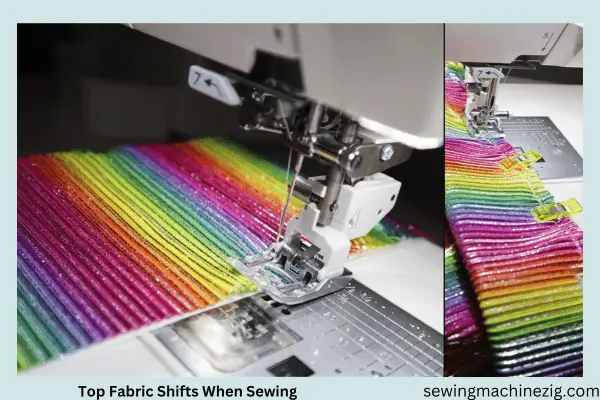
Fabric shifting is a common problem faced by sewers and can occur for various reasons. Here are the top reasons how to keep fabric from shifting while sewing.
1: Slippery Fabrics:
Fabrics with smooth or shiny surfaces, such as silk, satin, or rayon, are more prone to shifting due to their slippery nature. This can make them difficult to handle and sew, as they tend to slide around on the sewing machine.
2: Stretchy Fabrics:
Fabrics with a high degree of stretch, such as jersey, spandex, or lycra, can also be difficult to sew as they tend to stretch and shift as they are fed through the sewing machine.
3: Uneven Feed Dogs:
The feed dogs, which are the metal teeth that move the fabric through the sewing machine, can sometimes be uneven or malfunction, causing the fabric to shift.
4: Uneven Fabric Tension:
Uneven tension on the fabric can cause it to shift during sewing. This can occur if the fabric is not stretched or pulled evenly while sewing.
5: Incorrect Machine Settings:
Incorrect machine settings, such as the wrong stitch length or tension, can also cause fabric shifting during sewing.
To prevent fabric shifting, it’s essential to choose the right fabric for your project and use the appropriate sewing techniques. This includes using pins or clips to hold the fabric in place, using a fabric stabilizer, and sewing slowly and carefully. By following these tips, you can ensure that your fabric stays in place while sewing, resulting in a professional-looking finished product.
Eliminating Seam Puckering
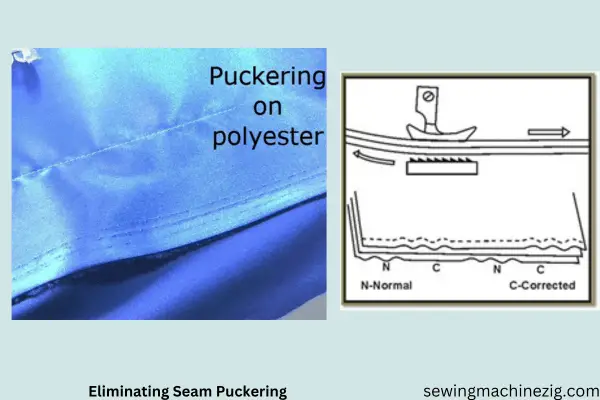
Seam puckering is a common issue that can occur while sewing, and it can be frustrating to deal with. Puckering happens when the fabric bunches or wrinkles around the seams, causing the seam to look uneven or even distorted. Fortunately, there are several solutions to help eliminate seam puckering and achieve smooth, even seams.
1: Use The Correct Needle And Thread:
The type and size of the needle and thread you use can affect the appearance of your seams. Choosing the correct needle and thread for your fabric can help prevent puckering.
2: Use A Fabric Stabilizer:
Using a fabric stabilizer, such as interfacing, can help support the fabric and prevent puckering.
3: Adjust Tension Settings:
Incorrect tension settings can cause puckering, so make sure to adjust the tension settings on your sewing machine to match your fabric.
4: Sew Slowly And Carefully:
Sewing slowly and carefully can help prevent puckering by allowing you to control the fabric and prevent it from bunching up.
5: Use The Right Sewing Technique:
Certain sewing techniques, such as easing, can help prevent puckering by distributing the fabric evenly.
By following these solutions on how to keep fabric from shifting while sewing, you can eliminate seam puckering and achieve smooth, even seams, giving your sewing projects a professional and polished look.
Conclusion:
how to keep fabric from shifting while sewing well fabric shifting can be a frustrating problem that can result in uneven or distorted seams.
However, there are several effective solutions to help prevent fabric shifting while sewing, including using pins or clips, using a fabric stabilizer, adjusting tension settings, and sewing slowly and carefully. By implementing these tips and techniques, you can maintain control of the fabric and achieve polished and professional-looking results.
It’s important to choose the right fabric for your project and use the appropriate sewing techniques to ensure that your finished product is of high quality. By taking the time to perfect your sewing skills and troubleshoot common issues like fabric shifting, you can create beautiful and well-crafted projects that you can be proud of. I hope this article made clear how to keep fabric from shifting while sewing.
FAQs:
Here are some frequently asked questions about how to keep fabric from shifting while sewing, along with detailed answers:
Q 1: How Do I Know Which Type Of Pin Or Clip To Use?
A: The type of pin or clip you use will depend on the thickness and texture of the fabric you’re working with. For lightweight fabrics, use thin, sharp pins or small clips. For heavier fabrics, use longer or stronger pins or clips. You may also want to experiment with different types of clips, such as bulldog clips or sewing clips, to find what works best for your project.
Q 2: How Do I Prevent Pins From Leaving Holes In The Fabric?
A: To prevent pins from leaving holes in the fabric, place them within the seam allowance or use special quilting pins that are designed to minimize the size of the hole. You can also use clips instead of pins to avoid creating holes altogether.
Q 3: Can I Use A Fabric Adhesive Spray To Hold The Fabric In Place?
A: To prevent the fabric from stretching or distorting, make sure to use the appropriate needle and thread for your fabric, and adjust the tension settings on your sewing machine. You may also want to consider using a fabric stabilizer, such as interfacing, to help support the fabric and prevent stretching.
Q 4: How Do I Prevent The Fabric From Stretching Or Distorting While Sewing?
A: Yes, a walking foot can be an effective tool for preventing fabric shifting while sewing. A walking foot helps to feed the fabric evenly through the machine, preventing it from shifting or bunching up.
Q 6: How Do I Handle Fabric That Is Prone To Slipping, Such As Silk Or Satin?
A: When working with slippery fabrics, it’s important to handle them with care. Use pins or clips to hold the fabric in place, and consider using a fabric stabilizer to help support the fabric. You may also want to sew slowly and carefully to prevent the fabric from shifting or sliding out of place.
Q 7: Can I Use A Basting Stitch To Hold The Fabric In Place?
A: Yes, a basting stitch can be an effective way to temporarily hold the fabric in place while sewing. However, be sure to remove the basting stitch after sewing the final seam to avoid any puckering or distortion in the fabric.

